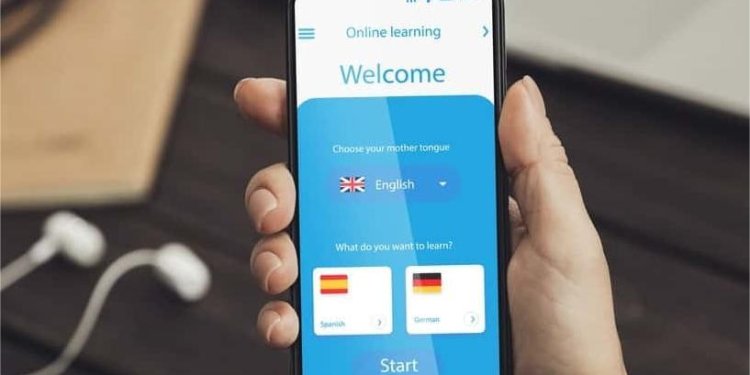In today’s globalized world, mastering a second or even third language is no longer optional it’s a necessity.
Whether students are preparing for international careers, enhancing academic performance, or simply broadening cultural horizons, language learning apps have become powerful tools.
The demand for efficient, user-friendly, and affordable solutions has skyrocketed, leading to dozens of apps promising quick results. But which one truly deserves the title of best language learning app for students?
In this article we will discussed some of the top apps, their features, pricing, benefits, and how they can help students achieve fluency easy and faster.
What is student language learning app?
Student language learning app are set of software develop specifically for language learning purposes. It serves as a tools that support student to learn different language cross the globe educational purposes
Why Students Need Language Learning Apps
Students face unique challenges: busy schedules, limited budgets, and the pressure of exams or study-abroad programs. Language apps are ideal because they offer:
Flexibility – Learn anywhere, anytime.
Cost-effectiveness – Most apps are cheaper than traditional classes.
Gamification – Engaging, interactive lessons boost motivation.
Diverse language options – From Spanish and French to Korean and Mandarin.
With the right app, students can progress at their own pace, reinforce school lessons, and gain confidence in real-life conversations.
Top 7 Best Language Learning Apps for Students in 2025 -2026
After thorough research and user reviews across different places, expert opinions, and student feedback, here are the best language learning apps that stand out in terms of quality, affordability, and student-friendly features.
1. Duolingo – Best Free Language Learning App
Duolingo remains one of the most popular apps worldwide, especially among students.
Key Features Duolingo Language Learning App:
Free to use with optional premium upgrades.
Gamified lessons with streak rewards.
Wide language selection (40+ languages).
Bite-sized lessons ideal for busy schedules.
Why Students Love It:
Duolingo feels like a game rather than a chore. With short lessons, students can learn during commutes or breaks without feeling overwhelmed.
2. Babbel – Best for Conversational Skills
Babbel focuses on real-life dialogues, making it great for students preparing for travel or exchange programs.
Key Features of Babel Language Learning App:
Lessons built around conversation.
Speech recognition technology for pronunciation.
Affordable subscription plans.
Tailored review sessions to reinforce memory.
Why Students Love It:
Babbel’s structure ensures that learners practice speaking early on, helping them build real-world confidence.
3. Rosetta Stone – Best for Immersive Learning
As one of the pioneers in digital language learning, Rosetta stone is still highly relevant.
Key Features of Rosetta stone Language Learning App:
Immersive, context-based teaching (no translations).
Strong focus on speaking and listening.
Offline access available.
Wide range of languages.
Why Students Love It:
Students who want a classroom-like immersive experience benefit from Rosetta stone’s proven methodology.
4. Busuu – Best for Structured Learning
Busuu combines AI technology with community feedback, making it excellent for students who thrive on interaction.
Key Features of Busuu Language Learning App:
Personalized study plans.
Grammar-focused lessons.
Peer-to-peer corrections from native speakers.
Certificates recognized by McGraw-Hill.
Why Students Love It:
Busuu feels like a guided course, but without the high costs of tutoring. The certificate feature is a bonus for academic and professional resumes.
5. Memrise – Best for Vocabulary Building
Memrise specializes in teaching words and phrases quickly using mnemonics and video clips.
Key Features of Memrise Language Learning App:
Real-life video examples from native speakers.
Smart repetition system (SRS).
Focus on vocabulary retention.
Free and premium options.
Why Students Love It:
Students can rapidly expand vocabulary for exams, travel, or academic reading.
6. HelloTalk – Best for Practicing with Native Speakers
Hello Talk connects learners directly with native speakers worldwide, making it ideal for conversational practice.
Key Features of Hello Talk Language Learning App:
Text, voice, and video chat options.
Built-in translation and correction tools.
Community-based learning.
Free with optional premium upgrades.
Why Students Love It:
Students appreciate the real-world practice and cultural exchange, which no AI or automated app can fully replicate.
7. LingQ – Best for Reading and Listening Skills
LingQ provides an extensive library of real-world content to improve comprehension.
Key Features of Lingq Language Learning App:
Access to articles, podcasts, and audiobooks.
Vocabulary tracking system.
Learn from authentic materials.
Multilingual options.
Why Students Love It:
Perfect for students who want to boost academic reading and listening comprehension.
Factors to Consider When Choosing a Language Learning App
Every student has different goals. Here’s what to consider before downloading:
Budget – Free vs. premium apps.
Learning Style – Gamified, structured, or immersive.
Language Availability – Not all apps cover less common languages.
Offline Access – Essential for traveling students.
Extra Features – Certifications, tutoring, or cultural immersion.
The Best Language Learning App for Students for Different Purpose
Budget-conscious students’ → Duolingo.
Conversational learner’s → Babbel or HelloTalk.
Immersion seekers → Rosetta stone.
Academic-driven learners → Busuu or LingQ.
Vocabulary booster’s → Memrise.
Conclusion :
Ultimately, the best language learning app for students is the one that fits their unique learning style, academic goals, and daily routine uses, next time you are looking for best student learning do well to go through the article here or always visit our website at ayorblog




